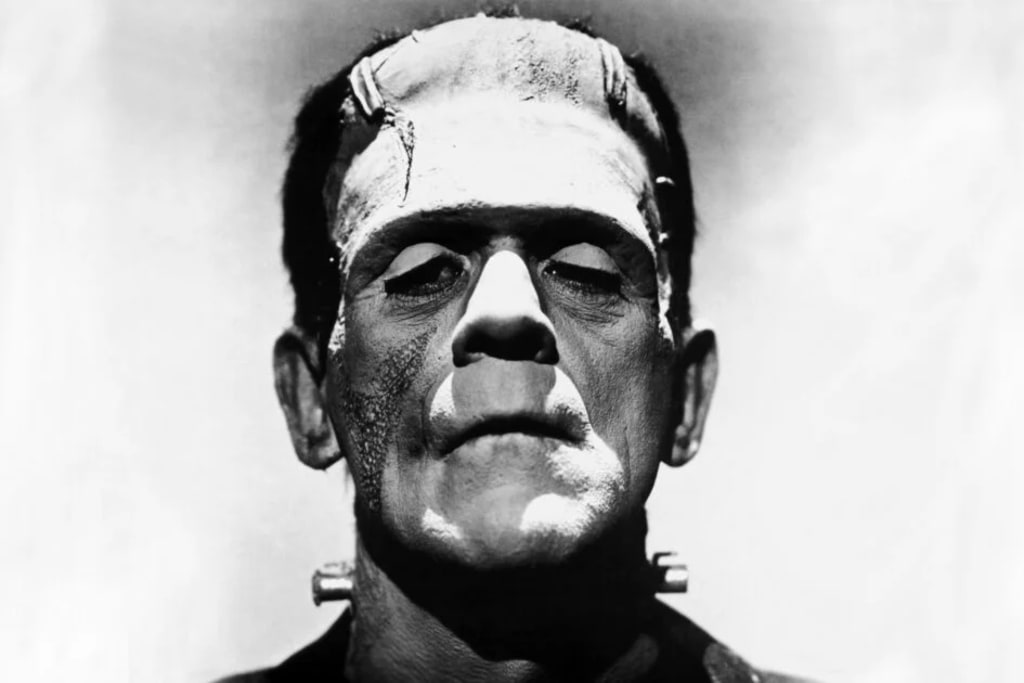
Mary Shelley's iconic novel, "Frankenstein," published in 1818, captivated readers with its gripping tale of creation, ambition, and the pursuit of knowledge. Set in the late 18th century, the story follows Victor Frankenstein, a young scientist driven by an insatiable thirst for knowledge and the desire to unlock the secrets of life and death.
Victor Frankenstein, born into a wealthy Swiss family, possessed a profound interest in natural philosophy and alchemy from a young age. His passion for these subjects grew exponentially as he delved deeper into his studies at the University of Ingolstadt. Consumed by his desire to conquer death, Victor embarked on a reckless experiment to create life itself.
In his isolated laboratory, Victor toiled ceaselessly, gathering body parts from various sources to construct his creation. With each painstaking step, he assembled a being made of stolen limbs and organs, breathlessly waiting for the moment when his creation would awaken. One stormy night, as lightning cracked through the sky, the creature came to life.
To Victor's horror, he realized the consequences of his actions. The creature, grotesque and towering, frightened him. Overwhelmed by fear and revulsion, Victor fled his laboratory, leaving the creature to fend for itself. The abandoned creation, lacking guidance and understanding, set out on a path of self-discovery in a hostile world.
The creature wandered through the countryside, yearning for companionship and acceptance. However, everywhere it turned, it was met with fear and rejection. People screamed and attacked the creature, forcing it into a life of solitude and isolation. The creature, left alone with its thoughts and emotions, began to experience anger and resentment towards its creator.
Driven by its desire for revenge, the creature sought out Victor, determined to make him understand the pain and suffering it had endured. The creature demanded that Victor create a companion for it, promising that if Victor acceded to this request, it would disappear forever, allowing him to live in peace. Overwhelmed by guilt and fear, Victor reluctantly agreed.
Victor traveled to a remote island in Scotland to carry out his task, but as he began the process, he was plagued by doubts and the fear of creating another monster. In a moment of clarity, he realized the potential consequences of his actions. Victor destroyed his progress, unwilling to inflict another creature like himself upon the world.
Enraged by Victor's betrayal, the creature swore revenge upon him and anyone he held dear. It pursued him relentlessly, leading to a climactic confrontation in the Arctic wasteland. Victor's pursuit of knowledge and his ambition ultimately led to his demise, as he succumbed to exhaustion and the extreme conditions.
The creature, burdened by its own guilt and remorse, appeared at Victor's side, consumed with sorrow over the destruction it had caused. It expressed remorse for its actions and the pain it had inflicted upon others. Understanding the consequences of its existence, the creature vowed to seek redemption and vanished into the wilderness, never to be seen again.
"Frankenstein" is a cautionary tale that explores the dangers of unchecked ambition, the ethical implications of scientific advancement, and the consequences of rejecting those who are different. Mary Shelley's timeless novel continues to resonate with readers, prompting contemplation on the ethical boundaries of scientific progress and the importance of empathy and understanding in society.
SECOND STORY
This post comes via Know More, Wonkblog's social media site.
Kurt Vonnegut claimed that his prettiest contribution to culture wasn’t a popular novel like “Cat’s Cradle” or “Slaughterhouse-Five,” but a largely forgotten master’s thesis he wrote while studying anthropology at the University of Chicago. The thesis argued that a main character has ups and downs that can be graphed to reveal the taxonomy of a story, as well as something about the culture it comes from. “The fundamental idea is that stories have shapes which can be drawn on graph paper, and that the shape of a given society’s stories is at least as interesting as the shape of its pots or spearheads,” Vonnegut said.
In addition to churning out novels, Vonnegut was deeply interested in the practice of writing. The tips he wrote for other writers – including “How to write with style” and “Eight rules for writing fiction” -- are concise, funny, and still very useful. The thesis shows that Vonnegut’s preoccupation with the nuts and bolts of writing started early in his career.
Vonnegut spelled out the main argument of his thesis in a hilarious lecture, where he also graphed some of the more common story types. (Vonnegut was famously funny and irreverent, and you can hear the audience losing it throughout.) He published the transcript of this talk in his memoir, "A Man Without a Country," which includes his own drawings of the graphs.
Vonnegut plotted stories on a vertical “G-I axis,” representing the good or ill fortunes of the main character, and a horizontal “B-E” axis that represented the course of the story from beginning to end.
One of the most popular story types is what Vonnegut called “Man in Hole,” graphed here by designer Maya Eilam. Somebody gets in trouble, gets out of it again, and ends up better off than where they started. “You see this story again and again. People love it, and it is not copyrighted,” Vonnegut says in his lecture. A close variant is “Boy Loses Girl,” in which a person gets something amazing, loses it, and then gets it back again.
Maya Eilam
Creation and religious stories follow a different arc, one that feels unfamiliar to modern readers. In most creation stories, a deity delivers incremental gifts that build to form the world. The Old Testament features the same pattern, except it ends with humans getting the rug pulled out from under them.
Thank you for reading my page
One like and subscribe






Comments (1)
Hi Hamza, I enjoyed your thoughts on Frankenstein. I must be honest I DNF'd it half way through because it was so depressing. I need to revisit it and finish it this time.